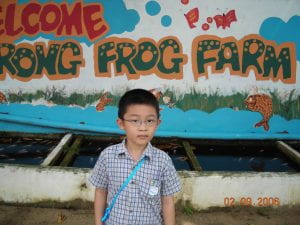Hi everyone, welcome back. Last week, I was part of the World Organisation of the Scouting Movement (WOSM) team that took part in the takeover of the UN Youth Envoy’s social media accounts.
I chose to talk about food security amidst global warming, and this comprised Instagram Stories as well as a written opinion piece.
I was quite apprehensive at the start – after all, I am just a year one BES student with seemingly no experience. However, I was encouraged to look at personal stories. I soon realised that many small decisions I made many years ago, and all the “random” activities I took part in have shaped my world view now. Some may call this lived experience. Personally, choosing to continue with the “germinating taugeh” experiment in primary school and repotting it blossomed into a love of gardening and nature.
This was probably reinforced by all the hiking in nature parks my family did in Hong Kong when I was a child and my experience as a scout. All these ties in pretty closely to the chart we will see in this week’s notes (slide 60) about building environmentally literacy.
In my op-ed, I espoused community gardens as a means to increase awareness of food security – a more personal touch of sorts. To an extent, gardening may already be quite popular here. All of the plots in older allotment gardens are fully subscribed, so people are willing to pay to garden. In fact, community gardening is the raison d’être of the social enterprise Ground Up Initiative. While I acknowledged that there are people who use these gardens to supplement their diets and increase their food security, I may have missed a much larger impact of urban farming. According to this article, urban farming could also improve relations between stakeholders, increase cities’ livability and even provide job opportunities. While the “Gardening with Edibles” programme proclaims its support for the “30by30” goal, the unrequited love on SFA’s part is puzzling. Surely this is a good opportunity for outreach?
When researching for the op-ed, I also came across measures such as growing on rewetted peatlands that our neighbouring countries could take that may be carbon neutral while ensuring food security. Given the more inward-looking aspect of “30by30”, I wonder if this may translate to reduced support for sustainable solutions overseas. The “diversify imports” strategy also means that breadth is valued over sustainability. When it comes to national security, sustainability may have to take a back seat. Given climate change’s varied effect on global food production, importing food from beyond our region hedges our bets but ironically becomes a positive feedback loop. Environmental justice would also be a greater concern if global food shortages see even more food imported out of already impoverished regions. This is not a new concept and nobody wants a repeat of the 1943 Bengal Famine.
Taking part in this social media outreach highlighted the global nature of some local problems. After all, even if “30by30” is a resounding success we would still need to account for the remaining 70%. Collective action needs to be taken on what is essentially a collective responsibility. Every member of society can do their part.
Cheers,
Ee Kin




Recent Comments